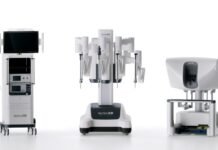Tesla and Intel: A Game-Changing AI Chip Partnership?
The recent announcement of a potential partnership between Tesla and Intel has sent ripples throughout the tech industry, particularly in the realm of artificial intelligence (AI). With Tesla aiming to produce its next-generation AI chips at a staggering 10% of Nvidia’s manufacturing costs, enterprise technology leaders are urged to pay close attention to developments in this space.
Elon Musk’s Bold Vision
During Tesla’s annual shareholder meeting on November 6, 2025, CEO Elon Musk hinted at a partnership with Intel, indicating a significant shift in AI hardware manufacturing. “You know, maybe we’ll, we’ll do something with Intel,” Musk stated, emphasizing that while no formal agreements are in place, discussions are underway. Musk’s words had an immediate impact, driving Intel’s shares up 4% in after-hours trading, reflecting market optimism about the collaboration.
Strategic Implications for Tesla and Intel
This potential partnership arrives at a critical moment for both companies. Tesla is currently developing its fifth-generation AI chip, designed to enhance its autonomous driving systems. However, the company is facing supply constraints with its existing suppliers, including Taiwan’s TSMC and South Korea’s Samsung. Musk noted, “Even when we extrapolate the best-case scenario for chip production from our suppliers, it’s still not enough.” This has prompted Tesla to consider establishing a “terafab”—a massive chip fabrication facility capable of producing at least 100,000 wafer starts per month.
For Intel, this collaboration presents an opportunity to rebound from its struggles in the AI chip market, where it has fallen behind Nvidia. The U.S. government’s recent 10% stake in Intel underscores the importance of domestic chip manufacturing, especially amid rising geopolitical tensions.
Cost and Performance Breakthroughs
Musk’s projections suggest that the AI5 chip could drastically alter the economics of AI deployment. By consuming approximately one-third of the power used by Nvidia’s Blackwell chip and costing just 10% to manufacture, Tesla’s AI5 chip could reshape enterprise AI strategies. “I’m super hardcore on chips right now, as you may be able to tell,” Musk remarked, emphasizing his commitment to innovation in chip technology.
Production Timeline: What to Expect
Tesla’s production roadmap indicates that a limited number of AI5 units will be available in 2026, with high-volume production expected to ramp up in 2027. Musk also hinted at plans for the AI6 chip, which is expected to double the performance of its predecessor, with production aimed for mid-2028. The proposed “terafab” signifies a bold move toward enhancing domestic chip manufacturing capabilities, aiming to alleviate supply chain vulnerabilities.
Implications for Enterprise Decision-Makers
As the potential Tesla-Intel partnership unfolds, several strategic considerations arise for enterprise technology leaders:
- Supply Chain Resilience: The shift toward domestic chip manufacturing addresses supply chain risks concentrated in Asia. Organizations should evaluate how these changes may affect their vendor relationships.
- Cost Structure Changes: If Tesla meets its cost targets, the competitive landscape for AI chips may shift drastically. Enterprises should prepare for potential pricing pressures and assess alternative chip architectures.
- Technology Sovereignty: The U.S. government’s stake in Intel highlights the importance of maintaining control over technology sources, particularly for organizations dealing with sensitive data.
- Innovation Pace: Tesla’s ambitious timeline suggests rapid advancements in AI hardware. Companies should factor this into their technology refresh cycles to avoid being left behind.
The Broader Industry Context
Musk’s statements come amid heightened U.S.-China technology competition. Nvidia has faced significant market share losses in China, dropping from 95% to near zero due to export restrictions. While Intel has not officially commented on the partnership, the market’s response indicates significant interest and potential discussions ahead.
Conclusion: A Turning Point for AI Infrastructure
The potential collaboration between Tesla and Intel may very well redefine the landscape of AI chip manufacturing and deployment. For enterprises, staying informed about these developments will be crucial in making strategic technology investments. The decisions made today regarding chip partnerships could ultimately determine which organizations gain access to the cost-effective, high-performance AI infrastructure of tomorrow.
FAQs
1. What is the significance of the Tesla-Intel partnership?
The partnership could lead to the production of AI chips at a fraction of Nvidia’s cost, reshaping enterprise technology strategies.
2. When will Tesla’s AI5 chips be available?
A limited number of AI5 units are expected to be produced in 2026, with high-volume production anticipated in 2027.
3. How does this partnership address supply chain issues?
By focusing on domestic chip manufacturing, Tesla and Intel aim to reduce reliance on Asian suppliers, potentially increasing supply chain resilience.
4. What are the expected performance improvements of Tesla’s AI chips?
The AI5 chip is projected to consume one-third of the power of Nvidia’s Blackwell chip while costing only 10% to manufacture.
5. Why is the U.S. government’s stake in Intel significant?
It highlights the strategic importance of maintaining domestic chip manufacturing capabilities amid global geopolitical tensions.







